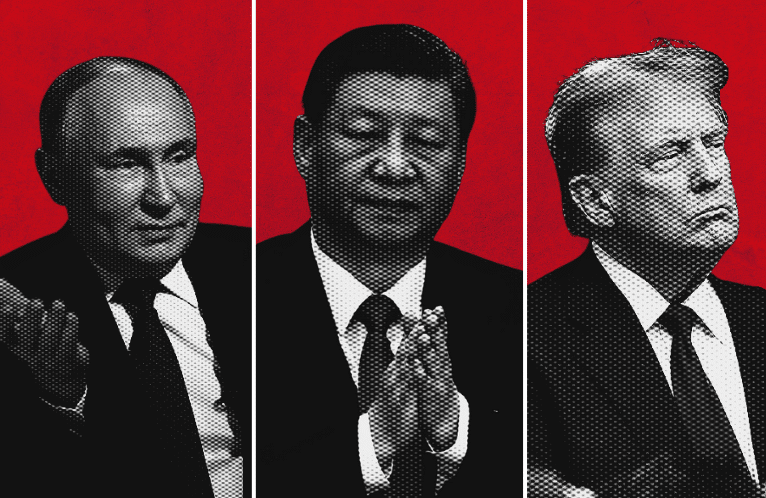Fears of a China Initiative Revival Stir Anxiety Among Chinese American Academics
EXCLUSIVE: Asia’s Uncertainty is India’s Opportunity
This past March, I wrote an article which discussed some of India’s fears over China’s alleged “String of Pearls” which threatened to widen the hold of Chinese influence in the Indian Ocean. Combined with the increasing Chinese collaboration with Pakistan vis-a-vis the China-Pakistan Economic Corridor, China’s activity in South Asia has naturally illicit Indian perception of encirclement.
A few years ago, there were many reasons to believe that India was headed for steady cooperation with China. India’s interest to join the Asia Pacific Economic Cooperation, its status among the BRICS, and its participation in the Chinese influence heavy Asian Infrastructure Investment Bank and New Development Bank were just some of the examples of closer Sino-Indian cooperation in Asia. Sure, India and China have had their differences including different takes on engagement with Pakistan, the border dispute, and that pesky fellow from Tibet. However, despite the differences, it seemed that India and China would put aside their differences to focus on trade convergence.
Make no mistake, the economic relationship between China and India are as strong as ever. However, in the political realms, the two countries seem to be facing a major perception gap with each other. The growing distrust has emerged from two of this past summer’s major events: India’s rejected membership from the Nuclear Suppliers Group and the Philippines v. China ruling.
Nuclear Suppliers Group
The Nuclear Suppliers Group (NSG) is a group of states that seek to promote nuclear non-proliferation. India has sought to join a group, however, despite support from countries including the United States and Canada, India had its applications rejected during the NSG plenary in Seoul this past summer. While many countries, including Switzerland and Turkey, opposed Indian membership, India pointed the finger at China as its main adversary in the application rejection.
External Affairs Ministry spokesman Vikas Swarap, speaking from the Shanghai Cooperation Organization summit in Tashkent, Uzbekistan thanked India’s supporters saying that despite “…procedural hurdles persistently raised by one country, a three-hour-long discussion took place last night on the issue of future participation in the NSG. An overwhelming number of those who took the floor supported India’s membership and appraised India’s application positively. We thank each and every one of them. It is also our understanding that the broad sentiment was to take this matter forward.”
China’s main argument against Indian membership is the fact that India is not a member of the Nuclear Non-Proliferation Treaty. India, however, claims that it received a country-specific waiver on this issue. Some commentators, like Panos Mourdoukoutas, on the other hand, believe that China’s rejection of India’s application is to “punish New Delhi for growing closer to [the] US in recent years, serving Washington’s policy to contain China.”
Indeed, China has recently been harder on India for its warming relations with the West made apparent through a recent article in the state-run Global Times that said India had become “spoiled” from the support of the West and that the country had become “smug on international affairs.” The article even inserts the United States into the mix, arguing that “US backing adds the biggest impetus to India’s ambition” and that by “cozying up to India, Washington’s India policy actually serves the purpose of containing China.”
The notion of Washington’s China containment policy that emerges from Mourdoukoutas and the Global Times suggests that the growing perception gap between India and China emerges from another perception gap between China and the US. As I argue in my weiqi analogy “while China has reached out for more influence in the Indian Ocean, India, Japan, and ASEAN have cooperated greatly in a way that also seems to be encircling China” in the great proverbial weiqi board. Fear of India as one of the US’s “stones” as a means of encirclement pervades China particularly through the now annual Malabar exercises which take place between the United States, India, and Japan. China’s fear is not completely unfounded as some US conservative commentators have suggested that the US seek a sort of containment policy to prevent Chinese assertiveness in East Asia.
However, if China is really using the NSG rejection as a means to punish India, the move will be, in the long run, counterintuitive, as it is more likely to push India closer to the West. While China has cultivated its own relationship with India, it should refrain from simultaneously pushing India away. Additionally, it should be noted that while India has indeed pursued closer relations with the West, there are still major differing interests and policy goals.
Philippines v. China verdict
Another example of contention between India and China appeared in the aftermath of the Philippines v. China verdict. In response to growing Chinese activity in the South China Sea, Philippines brought suit against China to be handled by an arbitral tribunal to rule on the case. China, for the most part, has disregarded the suit as it cannot be enforced. On July 12, 2016 the tribunal ruled in favor of the Philippines, declaring that China’s historically-based claim on the South China Sea had no foundation. India has, for the most part, played both sides in the South China Sea dispute.
In April 2016, India, China and Russia issued a joint statement on the South China Sea saying that “Russia, India and China are committed to maintaining a legal order for the seas and oceans based on the principles of international law, as reflected notably in the UN Convention on the Law of Sea (UNCLOS)” and that “all related disputes should be addressed through negotiations and agreements between the parties concerned.” This statement came as a surprise as India had previously called for restraint in the South China Sea while at the same time increasing its trade and defense relationship with ASEAN nations, many of which are parties in the South China Sea. With the April 2016 statement, it appeared that India had begun to side with China on the issue. However, this proved to not be the case.
Still bitter over the chide during NSG, New Delhi received the Philippines v. China decision wholeheartedly. The External Affairs Ministry gave a statement: “Sea lanes of communication passing through the South China Sea are critical for peace, stability, prosperity and development. As a State Party to the UNCLOS (United Nations Convention on the Law of the Sea), India urges all parties to show utmost respect for the UNCLOS, which establishes the international legal order of the seas and oceans.”
While appearing to support international covenants, India has, in action, seemed to support the other parties in the South China Sea issue by reaching out to ASEAN militarily and economically, particularly through Prime Minister Modi’s Act East Policy. One example of this is through the BrahMos missile that India has developed with Russia. This missile has recently influenced regional affairs. India upset China by sending some missiles to the India-China border for security purposes and is also currently considering selling the missile to Vietnam, a party in the South China Sea conflict.
India in World Affairs
If anything, the uneasy relationship between India and China has revealed India’s geopolitical flexibility. As Mohan Malik wrote in the American Interest, “The Hague ruling marks a definitive moment in the evolution of maritime law and Asia’s geopolitical order. The court case is over, but the dispute is not. The South China Sea, through which more than $5.3 trillion of maritime trade passes each year, is now the arena of a geopolitical poker game that will determine the future of regional order: Pax Sinica or Pax Americana. Washington seems as determined to preserve the U.S.-led liberal international order as Beijing is to change and modify it.” In a sense, India has the geopolitical flexibility to help shape the geopolitical state of the Asia-Pacific.
It is common knowledge that the international affairs in the globalization age is not black and white and it is unlikely that India will overwhelmingly support one side over the other. In fact, India’s international political efficacy would be maximized in East Asia’s complexity. As with all nations, the most important thing for India is to secure its own interests and in a situation where the United States and China are seeking partners to espouse their regional primacy in East Asia, India has the most to benefit.
If we can learn anything from all of this, it is that the BRICS are not monolithic and the intra-relations of the countries are sure to be varied as China and India rise in power and influence. This geopolitical drama holds great benefit (through cooperation) and detriment (through tension), however (like all good dramas) uncertainty in a dynamic region will be sure to influence perception, and in turn relations and rhetoric. Or perhaps Daniel Drezner is right and “trolling” has just become the language of international diplomacy.
By AARON WALAYAT, USCNPM Contributor








